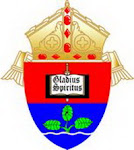The first shrine of Our Lady of Piat
Of course, the occasion called for a great celebration. And so on the feast of St. Stephen, the day after Christmas, of the year 1623 " the image of Our Lady was solemnly brought to the Ermita from Piat, the people following in devout procession." The people of Tuao did likewise, marching in procession towards the Ermita to welcome Our Lady "with great rejoicing and happiness of all." The following day the Ermita was blessed and a very solemn Mass was officiated (with deacon and sub-deacon): a sermon was preached to the crowd of more than 10, 000 people ("pasaban de diez mil personas"). Who gathered there from all the neighboring towns (24). It is amazing that such a large multitude would have gathered there, considering that the area was no thickly populated, and that the work of evangelization had been going on for only 25 years . They all were first generation Christians! Yet, it s interesting to note that, according to the same historian, Fr. Duarte, in the town of Nassiping, " on the banks of the Rio Grande, five or six leagues upstream from the city of the Spaniards (Lallo), by 1625, only twenty one years after having religious ministers, more than 3,400 have been baptized, as attested to by the baptismal records; and this not counting those baptized in case of serious sickness ("in articulo mortis"), who were not entered in the record book," (25). Nalfotan, later called Malaueg (today Rizal), "after 18 years of evangelization counted with a Christian population of 4, 670 souls" (26). Piat itself may have had at this time some 2,450 souls. In any case, the crowd that attended the dedication of the new shrine of Our Lady of Piat was really impressive! Aduarte adds to this effect, by way of an explanation: "So the holy Image moved the natives ("indians") to love, esteem and revere her."! And then he goes on to offer another interesting peace of information. An important lady from Piat (belonging to the "principalia." Or local aristocracy as indicated by the honorific title of Doña) took upon herself the responsibility of looking after the Ermita. She was the first "camarera: or caretaker of Our Lady. For this purpose, she decided to open up a new field ( or "sementera") and built a house near the shrine, so that she and her servants could visit the sacred place often and commend themselves to the Virgin. Besides, she place lamp there, that kept always burning before the venerated Image. This noble "indian" lady was named Doña Ines Magui'abbun (27).
















No comments:
Post a Comment
You may also E-mail us at dzns@cmn-ftd.org or dennisjavillonar@yahoo.com and davidjustin2008@hotmail.com for your comments, reactions as well as your suggestions.